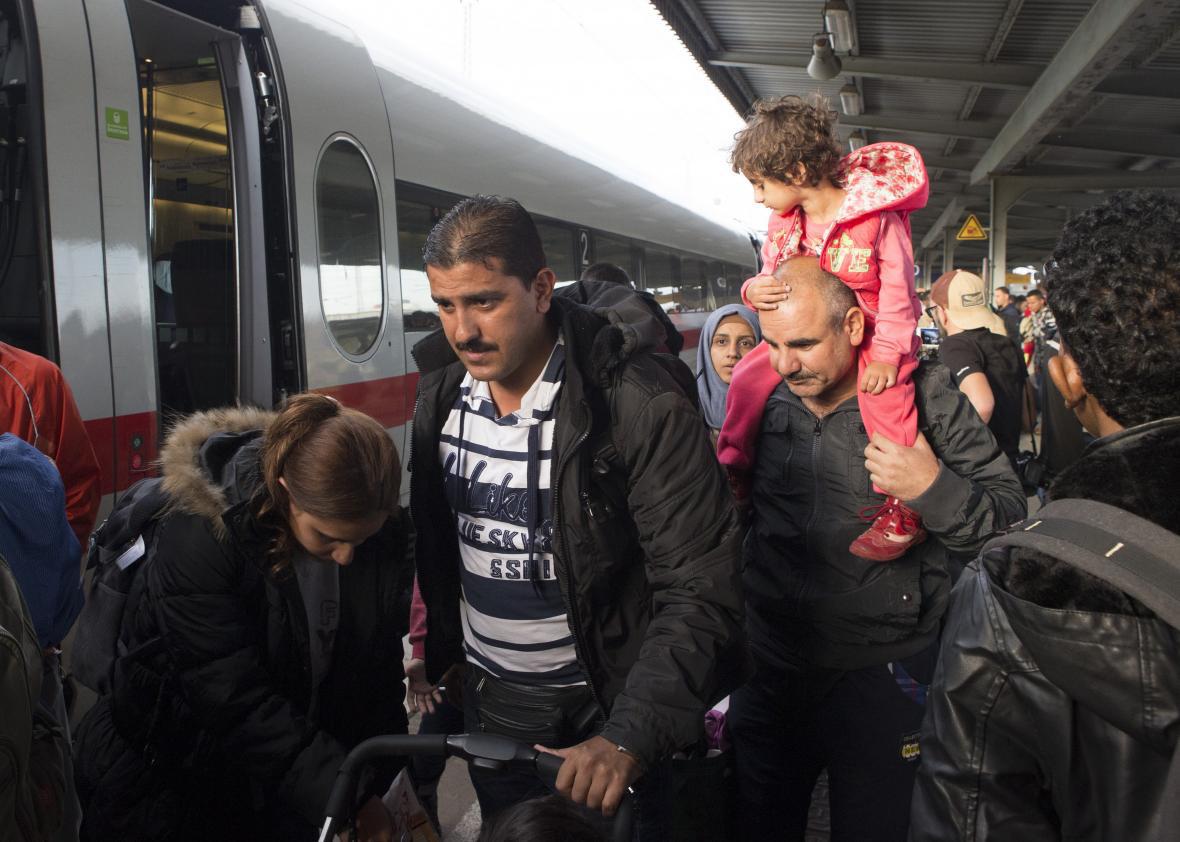One week after Germany opened its borders to refugees, it is now closing them in dramatic fashion, saying it is overwhelmed by the number of people, who continue soaring past all previous estimates. Germany said it was introducing border checks on its southern frontier with Austria, where the number of migrants has soared in the past week. It also ceased all train services from Austria, blocking the mode of transportation most migrants use to enter the country. On Saturday alone more than 13,000 migrants arrived in Munich, and Germany expects 800,000 this year, notes the BBC.
“The aim of these measures is to limit the current inflows to Germany and to return to orderly procedures when people enter the country,” said Interior Minister Thomas de Maiziere, according to Reuters. Those seeking asylum have to understand “they cannot choose the states where they are seeking protection,” he added. Only EU citizens and those with valid documents will be allowed through Germany’s Austrian border until further notice.
The decision effectively means that Germany is temporarily exiting the Schengen Area, which allows free movements in many European countries. But the Schengen treaty allows the bloc of countries to reimpose border controls on a temporary basis. It also comes a day before EU interior ministers are set to meet over the issue. De Maiziere said the new border controls should be seen as “a signal to Europe: Germany is facing up to its humanitarian responsibility, but the burdens connected with the large number of refugees must be distributed in solidarity within Europe.”
The BBC’s Damien McGuinness says de Maiziere’s announcement amounts to a “shrewd” political move because it “will help him put pressure on other European countries to do their bit.” Still, trouble seems inevitable. “It is likely to lead to chaotic scenes on the Austrian-German border, as tens of thousands of refugees try to enter Germany by any means possible and set up camp next to it,” warns the Guardian.
Reimposing border controls shows just how much this crisis is shaking up Europe. The Wall Street Journal explains:
The ability to cross from one European country into another without showing any documents, first enshrined in the Schengen Agreement of 1985, has been one of the most concrete benefits of the Continent’s integration for a generation of Europeans.
But in recent months, Europe’s open internal borders have meant that refugees and migrants arriving by boat on the shores of Italy and Greece have been streaming toward Germany, drawn by its healthy economy and generous social benefits. The tide accelerated in recent weeks after Germany temporarily stopped enforcing an EU rule requiring migrants seeking asylum to be processed in the first EU country they enter. The exemption only applies to Syrian nationals.
Germany’s announcement of fresh border controls comes hours after more than 40 migrants were discovered alive inside a refrigerated truck in Austria, reports CNN. Tragedy could not be prevented off the coast of Greek island Farmakonisi, where nearly 30 people, almost half of them children, died when their boat capsized. The coast guard rescued 68 people, and 29 managed to swim to shore, but 28 died.
Also in Slate, see the latest photographs from the European refugee crisis.
